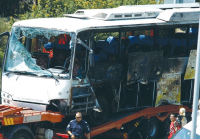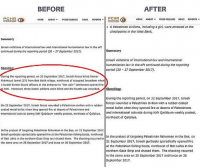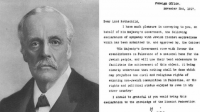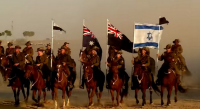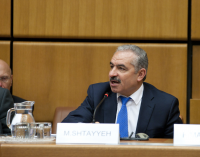Indeed, to take such actors seriously, it is alleged, only plays into a socially divisive politics of fear. Thus, The Guardian’s Yassir Morsi considers Man Haron Monis “a desperate man with a violent past” and academic experts such as Clive Williams inform us that Monis received “no direction from the Islamic State”, while Greg Barton contends “it’s a one-off home-grown incident”.
The propensity to regard religiously motivated violence as the actions of deracinated loners is not confined to Australia. A similar complacency characterised the Canadian response to the attacks in October by Martin Rouleau in Quebec and Michael Zehaf-Bibeau in Ottawa and the US response to Zane Thompson’s hatchet attack on New York policemen in the same month.
This response dismisses too quickly a strategy by Islamic State and Jabhat al-Nusra, also known as al-Nusra Front, that Western governments need to address forcefully. From the Tsarnaev brothers’ attack on the Boston Marathon and the murder of Lee Rigby in south London in 2013 to this year’s Ottawa and New York attacks, the Lindt cafe assault and the hit-and-run attacks in France before Christmas, such incidents have become the new normal.
They achieve what Cold War terrorist organisations sought, namely “many people watching and not many dead”. Violence motivated by the Irish Republican Army or the Palestine Liberation Organisation in the 1970s thrived on the oxygen of publicity. Such tactics increasingly suit the social media agenda of Islamic State to keep the West off balance by striking at its cosmopolitan heart.
It is not a coincidence, then, that an Islamic State online fatwa in September required potential jihadis to “kill a disbelieving American or European — especially the spiteful and filthy French — or an Australian, or a Canadian, or any other disbeliever … in any manner or way”. The potential assassin requires no authority for the deed because: “It is immaterial if an infidel is a combatant or a civilian. The sentence is one” — and it is, of course, death. The attacks in New York, Canada, Sydney, Dijon and Nantes predictably followed in the wake of this social media appeal.
In other words, although security services and the media dismiss the actors as “stray dogs” rather than lone wolves, their attacks serve a wider strategic purpose and reflect the thinking of the most important jihadist tactician since 9/11, Abu Musab al-Suri. Al-Suri possesses impeccable Islamist credentials. Syrian in origin, he gained Spanish citizenship through marriage in 1984. Subsequently he spent time in Peshawar, as al-Qa’ida began to take shape, with Osama bin Laden’s mentor, the Palestinian Abdullah Azzam. Moving to Londonistan in the early 90s, he joined the al-Qa’ida-linked group al-Muhajiroun.
After 9/11 al-Suri recognised that the global Islamic resistance movement required a more flexible strategy than al-Qa’ida had pursued. After 2003, al-Suri’s new third-generation jihadism promoted leaderless resistance. In 2005, he published online his Global Call to Islamic Resistance. It called for spontaneous, self-radicalised actions, “which will wear down the enemy and prepare the ground for waging war on open fronts … without confrontation in the field and seizing control of the land, we cannot establish an (Islamic) state, the strategic goal of the resistance”. Pakistan’s Inter-Services Intelligence arrested al-Suri in 2007 and renditioned him to Syria.
American Islamist Anwar al-Awlaki, however, published five articles extracted from Global Call in Inspire, the English online journal that made jihad hip. Significantly, the Syrian government released al-Suri in 2011 and his thinking now directly influences the online strategy of Islamic State and al-Nusra.
Yet, as with its ideology, Islamic State derives its strategy from anti-democratic Western sources. While the Islamist death cult draws on totalitarian ideologies for its sanctification of violence, the concept of leaderless resistance derives from the strategic thinking of American white supremacists. Ironically, it was Aryan Nations strategist Louis Beam who in the 1980s promulgated the concept of leaderless resistance where “individuals and groups” serve the ideological end, but “operate independently of each other”. Meanwhile the lone-wolf attacker first appeared in William Luther Pierce’s Hunter (1989). It inspired Timothy McVeigh’s 1995 attack on the Alfred P. Murrah building in Oklahoma City.
The media, security agencies and academe did not consider McVeigh insane. They took the bomber and the ideology motivating right-wing extremism seriously. By contrast, faced with a far more determined and ubiquitous Islamic State, an oblivious commentariat presents the current wave of home-grown attacks as isolated events, ignoring the group’s broader strategic purpose.
This wilful neglect underestimates the politically destabilising intent of lone-actor violence. Al-Suri and Islamic State have considered tactics and a strategic goal.
In response, Anglosphere governments engage in a discourse of denial leading to a disjuncture between what Islamists say, what the media and security community say they mean and what Islamists actually do. Such self-delusion will ultimately prove self-defeating.
David Martin Jones is an associate professor at the University of Queensland and author of Sacred Violence: Political Religion in a Secular Age (Palgrave, 2014).




